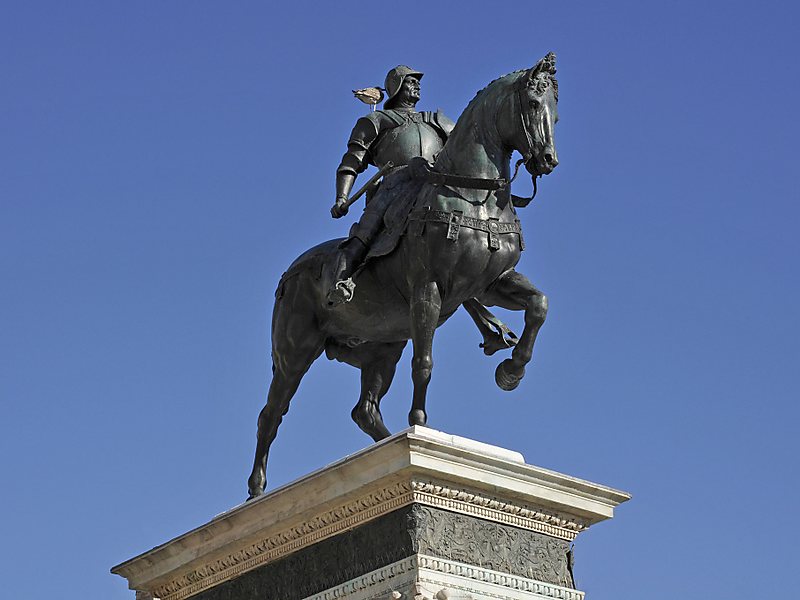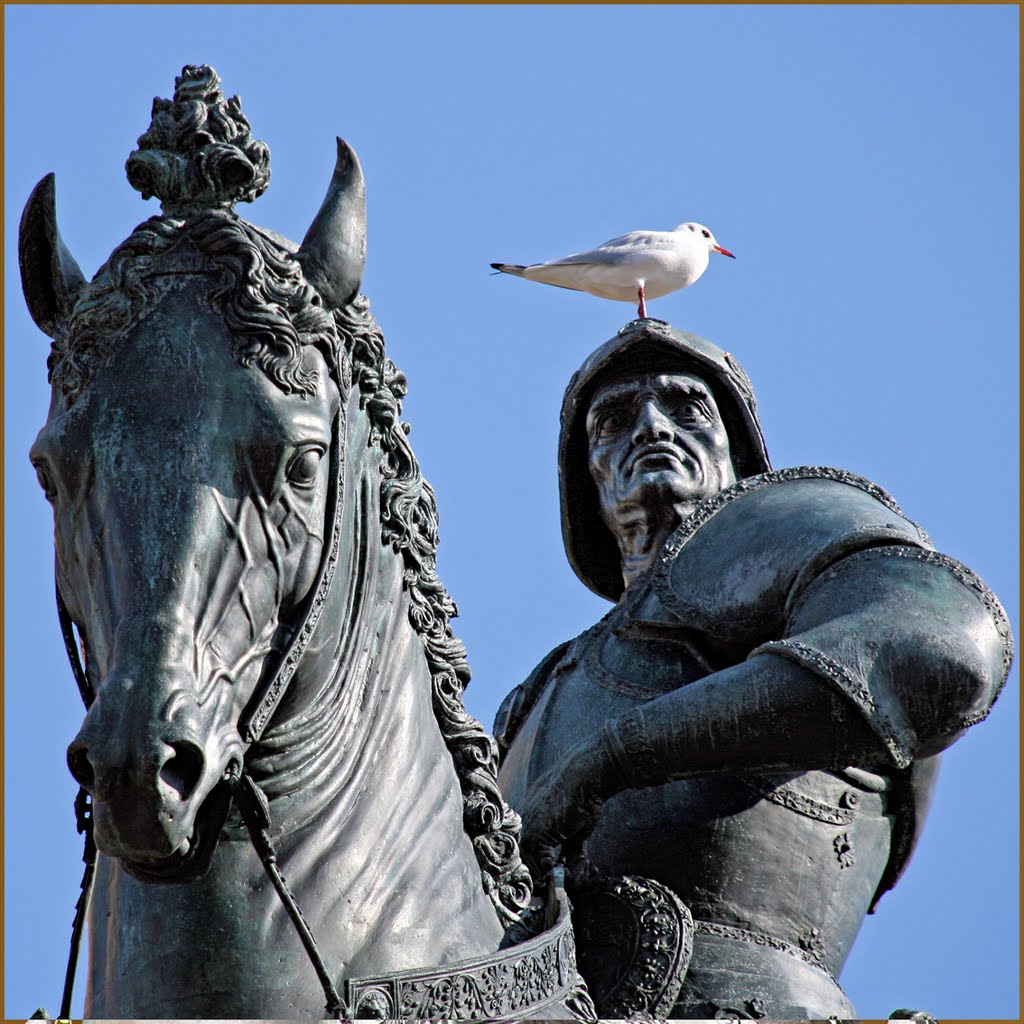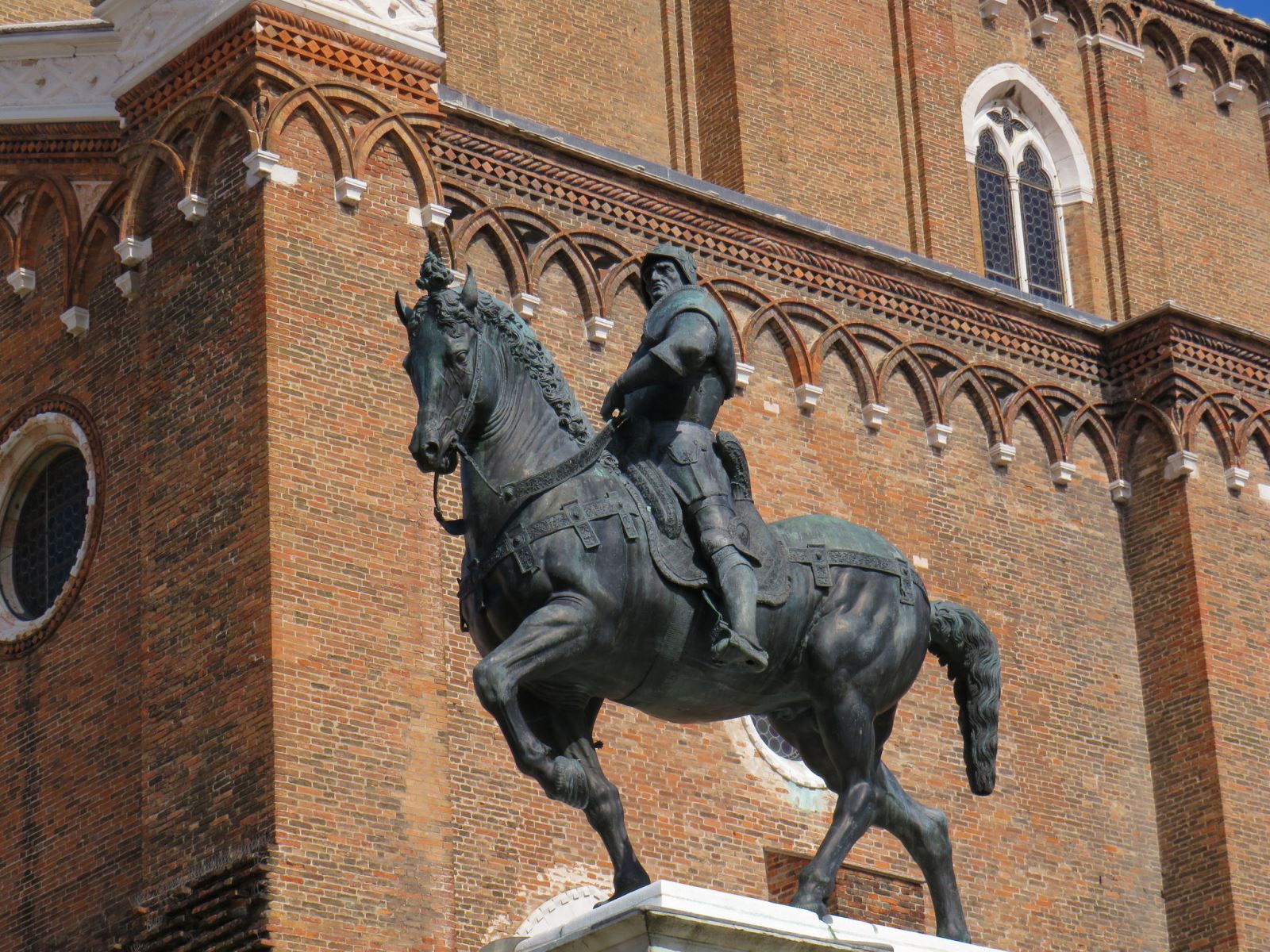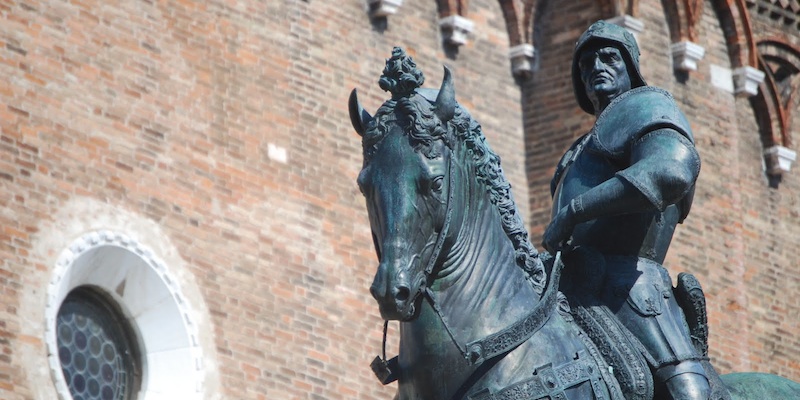
Verrocchio based the sculpture on Donatello's statue of Gattamelata, as well as on the ancient statue of Marcus Aurelius in Rome, the St. Mark's Horses in Venice, the Regisole(a late antiquity work in Pavia, now lost), and the frescoes of the Funerary Monument to Sir John Hawkwood by Paolo Uccello and of the Equestrian Monument to Niccolò da Tolentino by Andrea del Castagno.

The main problem he had to face was of statics: representing the horse while moving, with a raised leg, could cause stability problems due to the excessive weight of the bronze being supported only by three relatively thin legs. Donatello, in his monument at Padua, had partially solved the problem by putting the raised leg on a sphere. Verrocchio was the first to solve the problem in having the horse supported by three legs.

Although it was not placed where Colleoni had intended, art historian Passavent emphasised how fine it looks in its actual position, writing that "the magnificent sense of movement in this figure is shown to superb advantage in its present setting" and that, as sculpture, "it far surpasses anything the century had yet aspired to or thought possible". He points out that both man and horse are equally fine and together are inseparable parts of the sculpture.

Verrocchio is unlikely to have ever seen Colleoni and the statue is not a portrait of the man but of the idea of a strong and ruthless military commander "bursting with titanic power and energy". This is in contrast to Donatello's statue at Padua of the condottiere known as Gattamelata with its "air of calm command" and all Verrocchio's effort "has been devoted to the rendering of movement and of a sense of strain and energy".

According to Wikipedia













